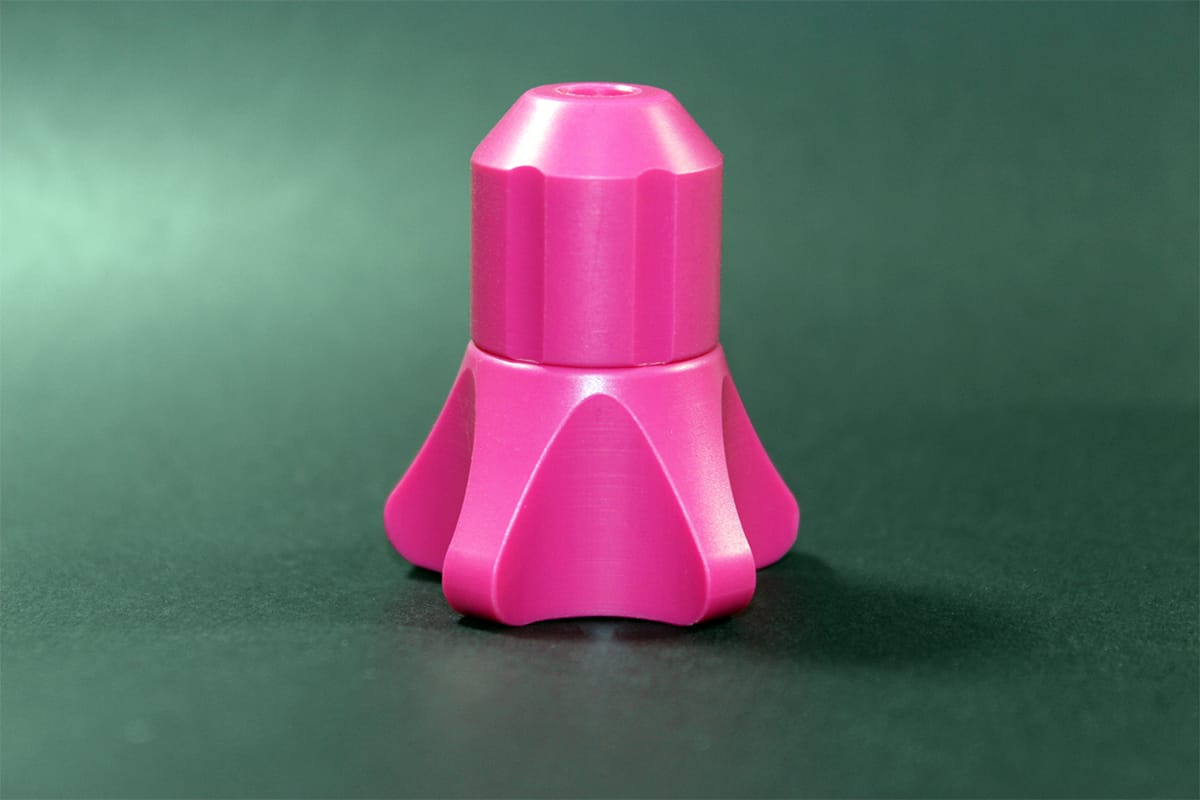
Polymat POM
Polyoxymethylene (POM) is a high-performance thermoplastic recognized for its exceptional mechanical strength, dimensional stability, and low friction properties. Its versatility and reliability across diverse industries such as automotive, aerospace, electronics, and industrial sectors highlight its effectiveness in precision and demanding applications. POM’s unique combination of attributes ensures it performs well in various challenging environments, making it a valuable material for advanced engineering solutions.
Mechanical Properties
- Tensile Strength: POM typically has a tensile strength ranging from approximately 60 to 75 MPa (megapascals) or 8,700 to 10,900 psi (pounds per square inch). This high tensile strength allows it to endure significant forces without breaking.
- Impact Resistance: POM exhibits good impact resistance, with an Izod impact strength of around 10 to 30 J/m (joules per meter) or 0.5 to 1.5 ft-lbf/in. This makes it suitable for applications requiring durability against sudden or high-impact forces.
- Modulus of Elasticity: The material has a high modulus of elasticity, typically between 2.5 and 3.5 GPa (gigapascals) or 360 to 510 ksi (kilopounds per square inch), indicating its rigidity and ability to maintain shape under stress.
- Flexural Strength: POM shows a flexural strength of about 90 to 120 MPa (megapascals) or 13,000 to 17,400 psi. This strength makes it resilient to bending and deformation under load.
- Creep Resistance: POM has low creep under load, maintaining its shape and mechanical properties over time when subjected to sustained stress. This makes it ideal for precision parts and components.
- Dimensional Stability: The material has excellent dimensional stability, with minimal shrinkage or warping during processing and in service, due to its low coefficient of thermal expansion.
- Fatigue Resistance: POM demonstrates good fatigue resistance, with the ability to endure repeated loading cycles without significant degradation in performance or strength.
Thermal Properties
- Glass Transition Temperature (Tg): Approximately -60°C to -80°C (-76°F to -112°F). POM remains mechanically stable and retains its properties at temperatures well below freezing.
- Melting Temperature (Tm): Typically around 175°C to 180°C (347°F to 356°F). This is the temperature at which POM transitions from a solid to a molten state, which is relevant for processing and high-temperature applications.
- Continuous Service Temperature: POM can generally be used continuously at temperatures up to about 100°C to 120°C (212°F to 248°F) without significant loss of mechanical properties.
- Thermal Decomposition Temperature: Begins to decompose at temperatures above 230°C (446°F). While it can withstand high temperatures in use, exposure to temperatures beyond this can lead to degradation.
- Thermal Stability: Exhibits good thermal stability within its service temperature range, maintaining its mechanical strength and dimensional integrity under typical operating conditions.
- Thermal Expansion: POM has a relatively low coefficient of thermal expansion, which means it undergoes minimal dimensional changes with temperature fluctuations, contributing to its dimensional stability in varying thermal conditions.
- Thermal Cycling Resistance: Shows reasonable resistance to thermal cycling, meaning it can endure repeated heating and cooling cycles without significant impact on its physical properties.
Chemical Properties
- Acids: POM generally exhibits good resistance to dilute acids, such as acetic acid and hydrochloric acid. However, it may be less resistant to strong or concentrated acids, which can lead to degradation over time.
- Bases: The material shows good resistance to dilute and moderately concentrated bases, including sodium hydroxide and potassium hydroxide. Concentrated bases can affect its mechanical properties over long periods.
- Solvents: POM is resistant to many organic solvents, including alcohols, esters, and ketones. It is particularly resistant to hydrocarbons and certain chlorinated solvents, but can be affected by strong solvents like methylene chloride and concentrated sulfuric acid.
- Oxidizing Agents: The material has moderate resistance to oxidizing agents such as hydrogen peroxide and chlorine. Extended exposure to strong oxidizers can lead to degradation.
- Hydrolysis: POM is sensitive to hydrolysis, especially under high temperature and moisture conditions. Prolonged exposure to water or steam can lead to a reduction in mechanical properties due to polymer degradation.
- Fuel and Oils: It has good resistance to fuels and lubricating oils, making it suitable for use in automotive and machinery applications where exposure to these substances is common.
- Detergents and Cleaning Agents: POM is resistant to many common detergents and cleaning agents, though harsh chemicals or extended exposure may cause surface degradation or affect
Industrial Applications
Automotive
Used in manufacturing gears, bearings, fuel system components, and interior parts due to its high strength, low friction, and resistance to wear.
Aerospace
Employed in components such as cockpit controls, actuators, and precision parts where high strength, low weight, and dimensional stability are required.
Industrial Equipment
Utilized for producing mechanical parts like gears, bearings, and bushings that demand high mechanical strength and resistance to wear and fatigue.
Consumer Goods
Found in various household items and appliances, including kitchen gadgets, hardware, and electronic enclosures, due to its durability and resistance to impact.
Medical Devices
Used in medical equipment and devices such as surgical instruments, drug delivery systems, and diagnostic tools, thanks to its biocompatibility and ease of sterilization.
Electronics
Applied in electronic connectors, switches, and housings where precision, electrical insulation, and resistance to environmental factors are essential.
Packaging
Used in the manufacture of high-performance packaging materials and closures that require robustness and resistance to chemical exposure.
Construction
Utilized in construction materials and components, such as plumbing fittings and structural parts, due to its durability and resistance to environmental factors.